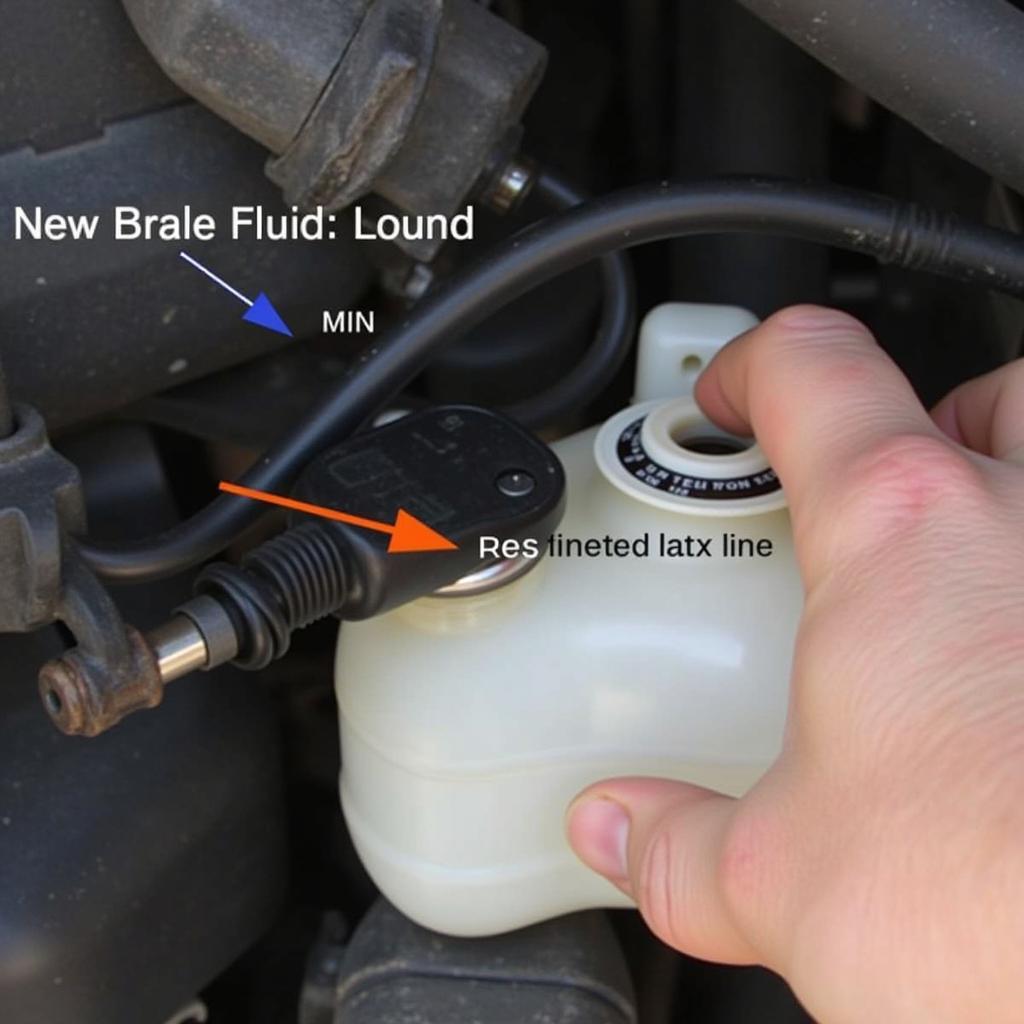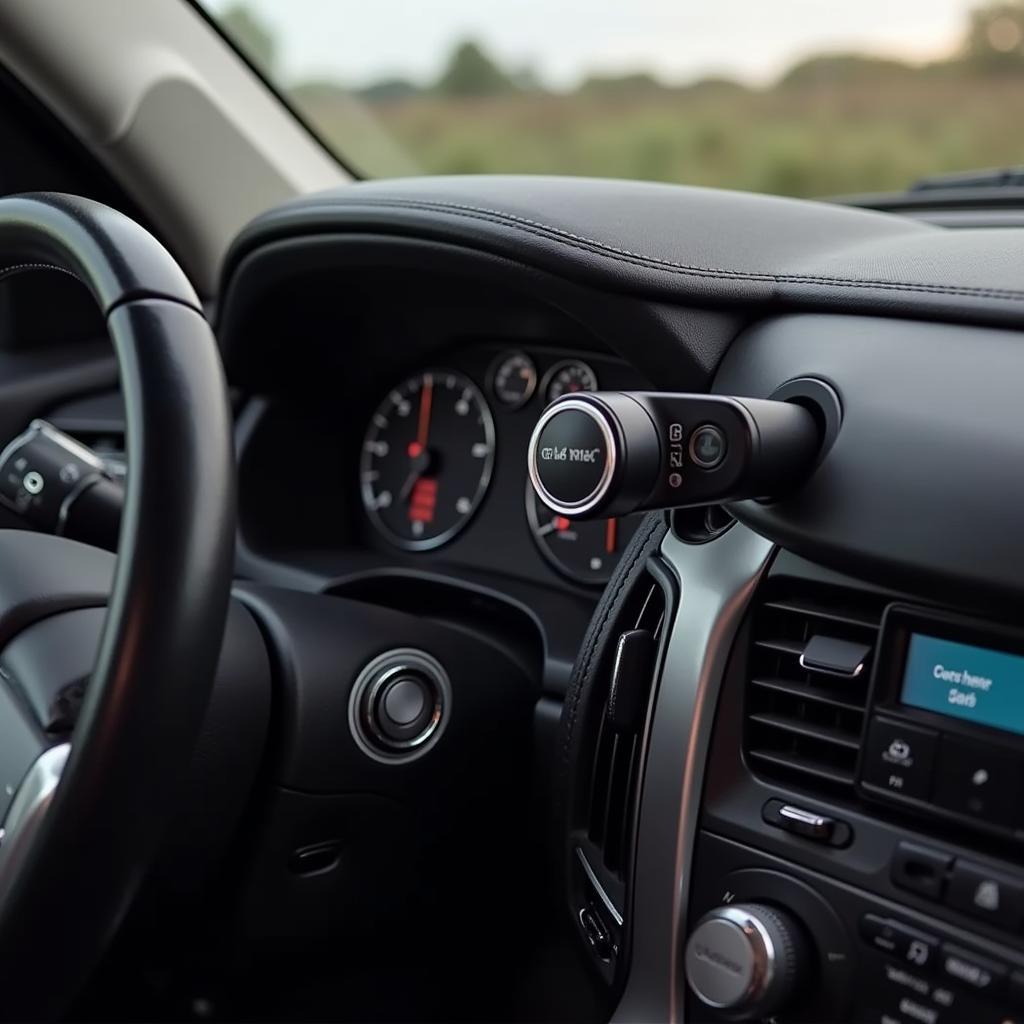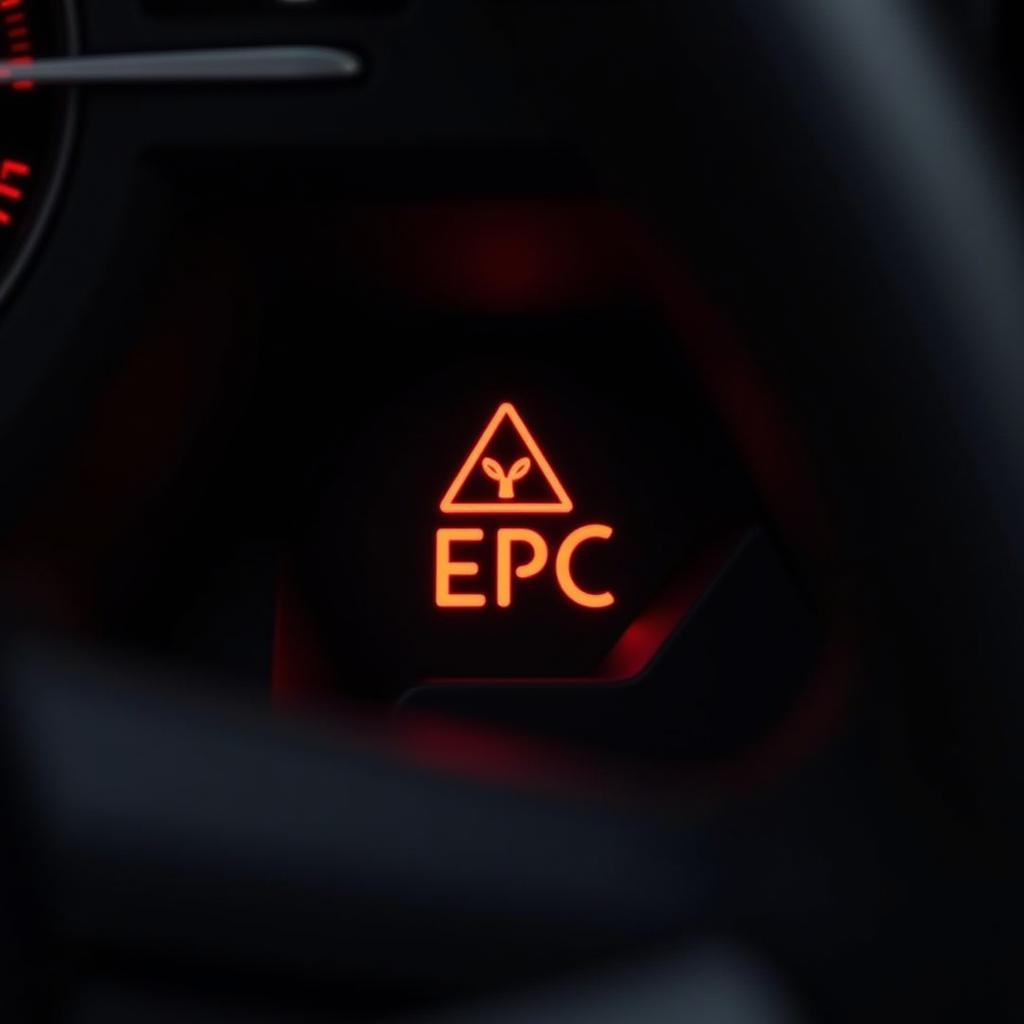The dreaded brake warning light on your 2002 Toyota Tacoma can be a source of anxiety. This article will guide you through the common causes, troubleshooting steps, and solutions for a 2002 Toyota Tacoma brake warning light, empowering you to diagnose the problem and get back on the road safely.
Understanding Your Tacoma’s Brake System
The brake system in your 2002 Toyota Tacoma is vital for your safety. It’s a complex system comprised of several key components including the master cylinder, brake lines, calipers, rotors, drums, and brake shoes, all working in concert to bring your truck to a stop. Understanding the basics of how these components interact can help you pinpoint the cause of a brake warning light.
Common Causes of a Brake Warning Light
A glowing brake warning light on your 2002 Toyota Tacoma dashboard can indicate several issues, ranging from simple to complex. The most common culprits include low brake fluid, worn brake pads, a faulty parking brake switch, or problems with the ABS system.
-
Low Brake Fluid: This is the most common and often easiest issue to fix. Low brake fluid can be caused by a leak in the brake lines or worn brake pads.
-
Worn Brake Pads: Brake pads are designed to wear down over time. When they get too thin, a sensor triggers the warning light.
-
Parking Brake Engaged: Sometimes, the warning light simply means your parking brake is engaged. Double-check to make sure it’s fully released.
-
Faulty ABS System: A problem with the Anti-lock Braking System (ABS) can also illuminate the brake warning light. This requires more advanced diagnostics.
Troubleshooting the Brake Warning Light
Before you panic, there are a few simple checks you can perform yourself. These preliminary diagnostic steps can save you time and money.
-
Check the Parking Brake: Make sure the parking brake is fully disengaged. This might sound obvious, but it’s often the simplest solution.
-
Inspect the Brake Fluid Level: Open the hood and locate the brake fluid reservoir. The level should be between the “MIN” and “MAX” lines. If it’s low, add the correct type of brake fluid as specified in your owner’s manual.
-
Check for Leaks: Inspect the brake lines and around the wheels for any signs of brake fluid leaks. Look for wet spots or dripping fluid. A leak requires immediate professional attention.
-
Inspect Brake Pads: If you’re comfortable doing so, check the thickness of your brake pads. They should be at least 1/4 inch thick. If they are thinner, they need to be replaced.
 Checking the Brake Fluid Level in a 2002 Toyota Tacoma
Checking the Brake Fluid Level in a 2002 Toyota Tacoma
When to Seek Professional Help
If you’ve performed the basic checks and the brake warning light persists, it’s time to consult a qualified mechanic. Diagnosing ABS issues and other complex brake problems requires specialized equipment and expertise.
Remote Diagnostics and Programming
Modern automotive technology allows for remote diagnostics and even programming in some cases. This can be a valuable tool for identifying and resolving certain brake system issues. A qualified technician can remotely access your vehicle’s computer system to pinpoint the source of the problem.
“Remote diagnostics is revolutionizing how we service vehicles,” says John Smith, Automotive Electrical Engineer at Remote Auto Solutions. “It allows us to quickly and accurately identify problems, saving time and money for our customers.”
Keeping Your Brakes in Top Condition
Regular maintenance is crucial for preventing brake problems and ensuring your safety. Follow these tips to keep your Tacoma’s brakes in optimal condition:
- Regular Brake Inspections: Have your brakes inspected by a qualified mechanic at least once a year or as recommended in your owner’s manual.
- Brake Fluid Flush: Flush your brake fluid every two to three years to prevent corrosion and maintain optimal braking performance.
- Quality Brake Pads: Use high-quality brake pads to ensure longevity and optimal stopping power.
Conclusion
The brake warning light in your 2002 Toyota Tacoma is a serious signal that shouldn’t be ignored. While some issues, like low brake fluid, can be easily addressed, others require professional attention. By understanding the potential causes and taking appropriate action, you can ensure the safety and reliability of your Tacoma’s braking system. Don’t delay in addressing this crucial safety component of your vehicle.
FAQ
- What is the most common reason for the brake warning light to come on? Low brake fluid is often the culprit.
- Can I drive my Tacoma if the brake warning light is on? It’s highly recommended to address the issue immediately and avoid driving if possible.
- How often should I have my brakes inspected? At least annually, or as recommended by your owner’s manual.
- What is ABS and why is it important? ABS stands for Anti-lock Braking System, which helps prevent wheel lockup during hard braking, improving control.
- How can I check my brake fluid level? Locate the brake fluid reservoir under the hood and check that the fluid level is between the “MIN” and “MAX” lines.
- What should I do if I suspect a brake fluid leak? Do not drive the vehicle. Contact a qualified mechanic immediately.
- How much does it typically cost to replace brake pads? The cost varies depending on the type of pads and labor rates, but it typically ranges from $100-$300 per axle.


